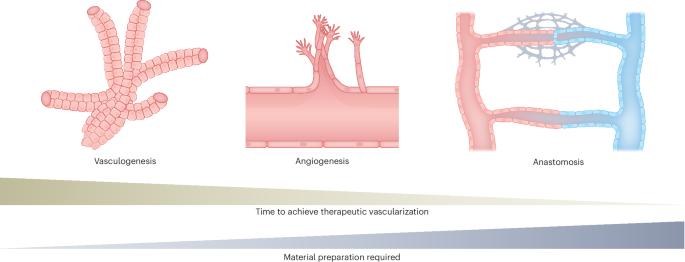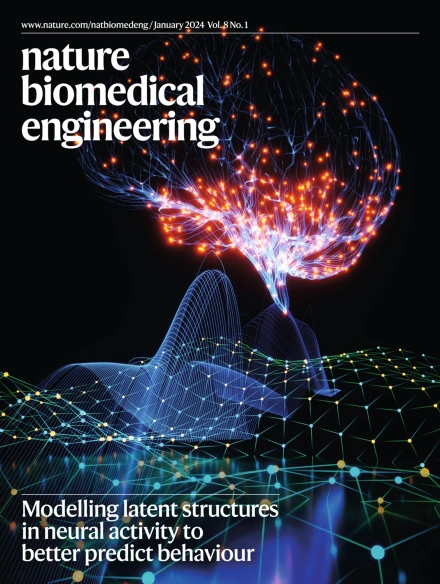用于器官修复的工程组织血管模式的策略
IF 26.8
1区 医学
Q1 ENGINEERING, BIOMEDICAL
引用次数: 0
摘要
创伤性损伤后器官功能的丧失往往是不可逆转的,对器官替代的需求持续超过供应。这种差异推动了用于修复或替换受损组织的治疗和工程组织的发展。然而,工程组织的存活受到建立功能性血管系统的挑战的限制。因此,努力集中在诱导组织植入物血管化或刺激治疗接受者血管生长的策略上。在这里,我们讨论了血管生物学、生物材料化学和3D打印技术在工程组织中血管图案的最新进展。为了使组织再生在临床上可行,必须通过生物、化学和物理方法引导血管形成跨越从微米到毫米的尺度。本文章由计算机程序翻译,如有差异,请以英文原文为准。


Strategies for the vascular patterning of engineered tissues for organ repair
The loss of organ function following traumatic injury is often irreversible and the demand for organ replacements continues to exceed supply. This discrepancy has driven the development of therapies and engineered tissues for the repair or replacement of damaged tissues. However, the survival of engineered tissues is constrained by the challenge of establishing a functional vasculature. Efforts have therefore focused on strategies that induce vascularization in tissue implants or stimulate vascular growth in recipients of the therapies. Here we discuss recent advances in vascular biology, biomaterials chemistry and 3D printing techniques for vascular patterning in engineered tissues. For tissue regeneration to be clinically viable, vascular formation must be guided across scales ranging from micrometres to millimetres through biological, chemical and physical approaches. This Review discusses recent advances in vascular biology, biomaterials chemistry and 3D printing techniques for vascular patterning in engineered tissues.
求助全文
通过发布文献求助,成功后即可免费获取论文全文。
去求助
来源期刊

Nature Biomedical Engineering
Medicine-Medicine (miscellaneous)
CiteScore
45.30
自引率
1.10%
发文量
138
期刊介绍:
Nature Biomedical Engineering is an online-only monthly journal that was launched in January 2017. It aims to publish original research, reviews, and commentary focusing on applied biomedicine and health technology. The journal targets a diverse audience, including life scientists who are involved in developing experimental or computational systems and methods to enhance our understanding of human physiology. It also covers biomedical researchers and engineers who are engaged in designing or optimizing therapies, assays, devices, or procedures for diagnosing or treating diseases. Additionally, clinicians, who make use of research outputs to evaluate patient health or administer therapy in various clinical settings and healthcare contexts, are also part of the target audience.
 求助内容:
求助内容: 应助结果提醒方式:
应助结果提醒方式:


